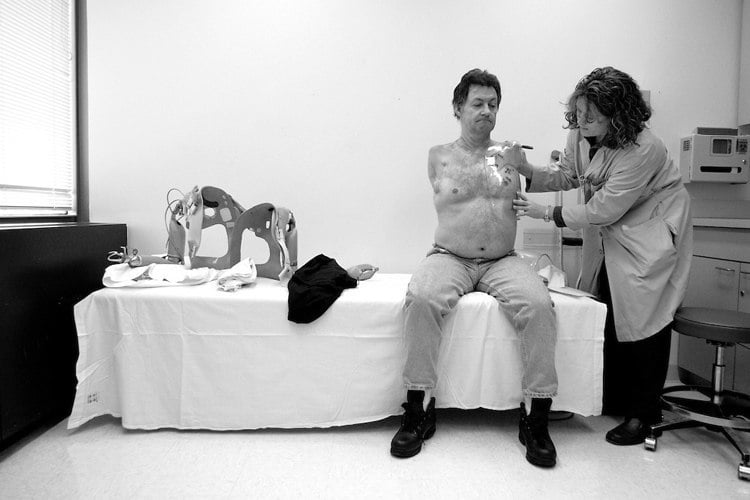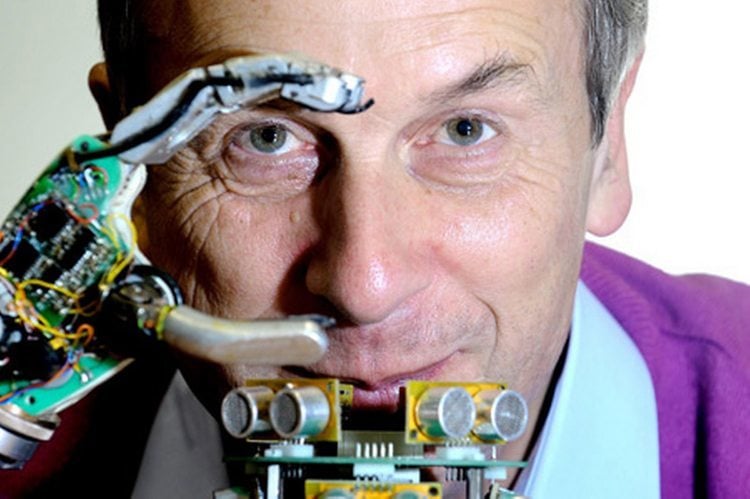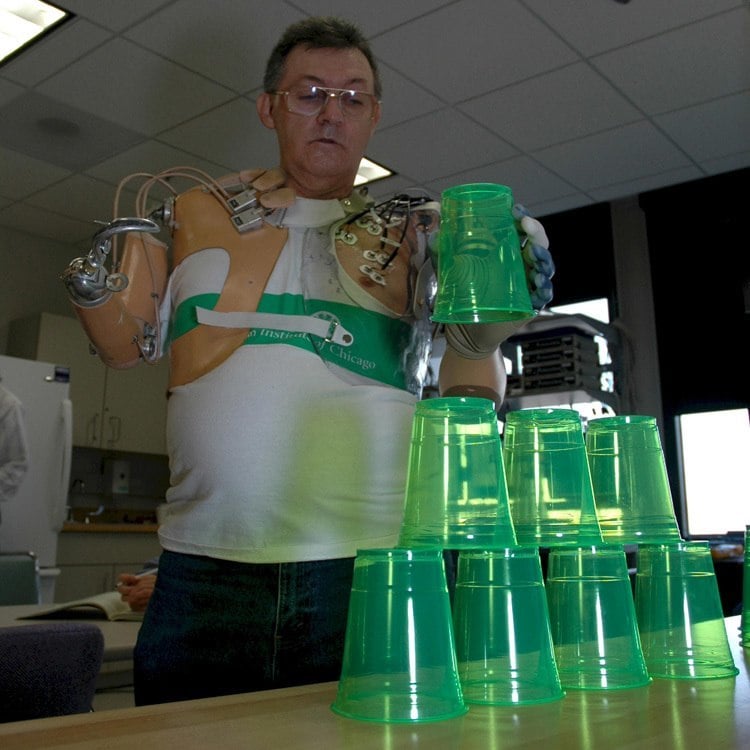Cyborgs are no longer confined to the pages of your favorite sci-fi novel. Real life cyborgs are here now.

Source: Anne Ryan
Once upon a time, Cyborgs only existed in the imaginaries created by our favorite science fiction writers and directors. That can no longer be said today. Indeed, sophisticated part-human, part-machine configurations are no longer confined to the page or film reel: they’re here now.
While real-life “cyborgs” are admittedly rare, we can only anticipate that over time technological enhancements will become more commonplace. Without further ado, here are some of the “cyborgs” living today and those pioneering the movement.
Real Life Cyborgs: Neil Harbisson

Source: The Plaid Zebra
British artist Neil Harbisson is the world’s first governmentally recognized cyborg. Born with an extreme color blindness known as achromatopsia, in 2004 Harbisson had an antenna permanently implanted in his brain which allows him to perceive colors as sound, and is now capable of experiencing colors beyond the human range of perception.

Source: Lars Norgaard
“At the start, I had to memorize the names you give to each color and the notes, but after some time, all this information became a perception,” said Harbisson in a recent TED talk. “When I started to dream in color, I felt the software and my brain had united.”
Harbisson’s remarks are closer to the truth than you might initially believe: since having the device implanted, Harbisson’s brain has produced new neural pathways to enhance his interaction with the Wi-Fi enabled device. Harbisson is also the founder of the Cyborg Foundation, which strives to assist others in their dreams of becoming a cyborg.
Kevin Warwick

Source: Fame Images
For British cybernetics professor Kevin Warwick, work truly is life. Since 1998, Warwick has been experimenting with implants on himself and is determined to become the world’s “most complete cyborg.” Fittingly, Warwick is the founder of Project Cyborg.

Source: Chris Beaumont
Warwick’s first implant, a microchip in his arms, allows him to open doors and operate thermostats simply by moving from room to room. In the future, Warwick hopes to implant a chip into his wife and explore how emotional, cognitive and movement signals can be sent from person to person, possibly via an internet link.
Jesse Sullivan

Source: Anne Ryan
Jesse Sullivan is helping pioneer the movement to use cybernetic technology for amputees. In 2001, Sullivan became one of the world’s earliest cyborgs when he was fitted with a bionic arm through implementation of a nerve-muscle graft.

Source: Outlook Series
Sullivan is able to fully control his bionic limb through brainwaves, but the fact that Sullivan can control the amount of pressure that his new hand puts on objects–and even perceive hot and cold temperatures through the artificial extremity–make the arm all the more incredible.
Due in part to Sullivan’s success with his bionic arm, more and more amputees are being equipped with increasingly functional synthetic limbs. Sullivan–along with others–envisions a day when all amputees (and those born missing extremities) will be able to be fitted with these amazing robotic limbs.





